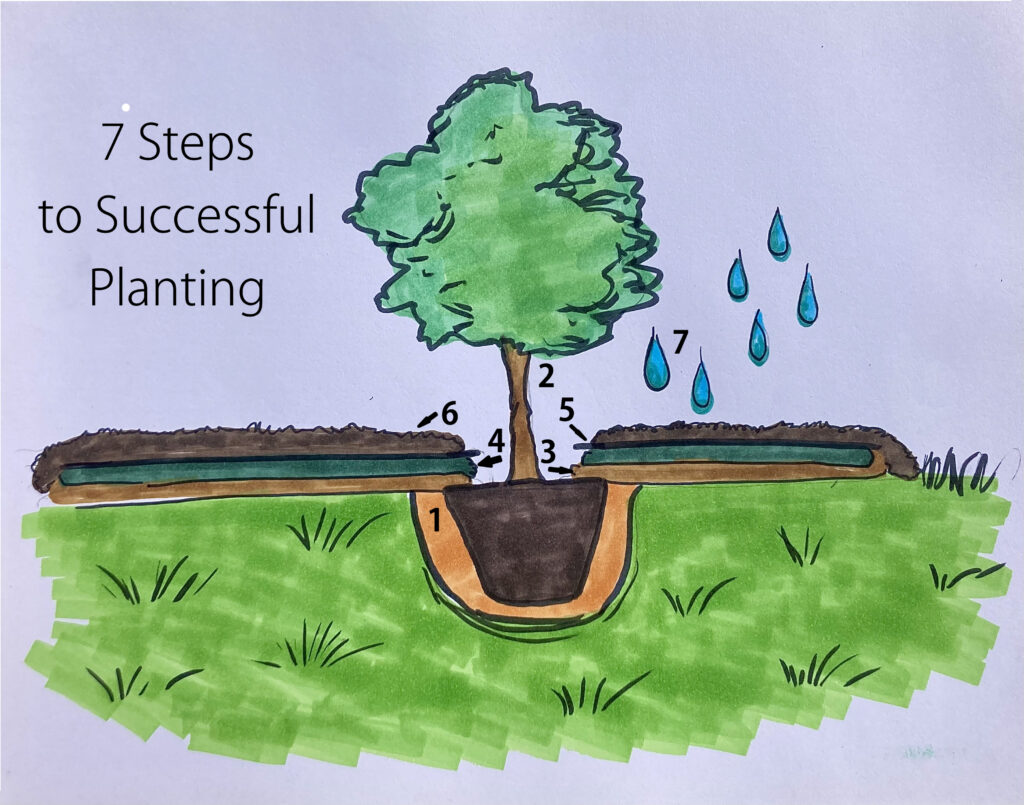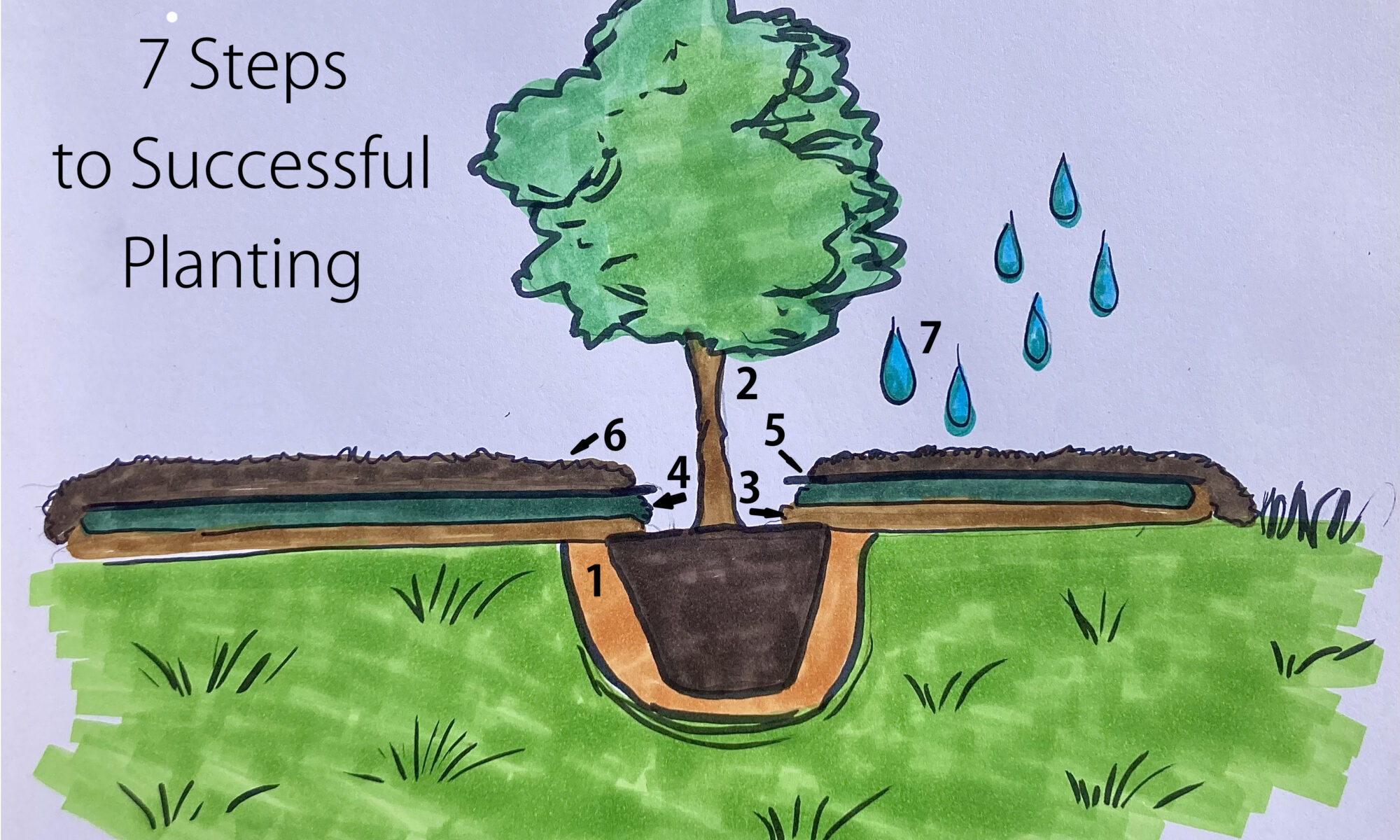Easy Instructions for Successful Fruit Tree Planting

- Prep the site: Make sure utilities have been clearly marked by calling 8-1-1 before you dig.
- Gather materials: You will need cardboard or contractor paper for weed suppression, compost, wood chip mulch, shovel, water.
- Digging the hole – Remove the plant carefully from the pot and set it next to the hole. When digging, the initial hole should be nearly twice as big as the root ball itself. Put most of the dirt you are removing in a wheelbarrow or the pot it came in. You will be filling the hole back up with the native dirt.
- Placing the plant – Set the root ball in the hole. The top of the root ball should be 2-3” higher than the soil line.
- Do NOT let the root ball go lower than the soil level. Remember, the plant will settle into the hole. Backfill the hole with the native soil.
- Do NOT put fertilizer or compost into the hole. Doing so will cause the roots of the plant to want to stay inside the hole instead of venturing out and establishing a wider root system. Amendments should always be applied to the top of the soil.
- Placing the plant – Set the root ball in the hole. The top of the root ball should be 2-3” higher than the soil line.
- Weed suppression barrier – Use contractor paper or cardboard around the tree (whether in a circle or in a row) to kill the grass and suppress weeds. If you are using cardboard, be sure to remove any staples or tape. This area should be several feet on each side of the tree in order to protect the roots and help decomposition.
- Compost – Apply a 1” layer of compost to the top of the soil. Keep all top dressing away from the trunk / stem of the plant. The width of the ring should be twice the width of the canopy of the plant.
- Soft stem plants: Use a compost that is plant and bacteria based.
- Hard stemmed bushes / trees: Use a mushroom or fungal based compost when possible.
- Mulch – Use a good mulch or wood chips as your top dressing (4-5” deep).
- Wood chips: Better for woody stemmed and /or mature plants. The benefit is that it takes longer to break down and provides a cleaner look. Drawback is that for annual vegetables it can tie up nitrogen when it initially breaks down.
- Straw or grass clippings: Better for annual flowers and annual vegetables. Benefit is that it breaks down faster and helps heal the soil quickly. Drawback is that is needs to be reapplied multiple times a year.
- NOTE: You can layer your mulch (leaves, grass clippings, straw, and wood chips on top). Do not mulch deeper than 6” at a time.
- Watering – For your first watering, consider using a probiotic spray (https://www.scdprobiotics.com/products/scd-bio-ag-soil-amendment?sca_ref=1290056.jX6cET8IFB).
- After the initial watering, use the finger / soil test to determine when the plant needs to be watered. In general, most plants like to dry out between watering.
- Finger test: Put your finger into the soil at the base of the tree down to the biggest knuckle. If the soil is moist, do not water. If it is dry, then consider watering.
- Plants like to be watered less frequently with a deeper watering. Do not water the trunk of the tree, always water about 12” from the trunk (or at the drip line of the canopy). Watering the trunk can cause root rot. If you are using drip irrigation, a sprinkler, or bubbler, make sure they are not spraying the wood or branches of the tree.
- After the first year, with annual mulch application, you should rarely need to water. Once established, let the tree roots do their job and only water during drought times or when the trees look overly stressed.
- After the initial watering, use the finger / soil test to determine when the plant needs to be watered. In general, most plants like to dry out between watering.
REMINDER: Fertilization in subtropic and tropical climates is best done in February, June, and September on fruit trees and berry bushes. In cooler climates, it should be done in March / April (just before flowers emerge) and again in June just before fruit set. After the first year, fertilization is best applied as a quality compost or manure. Chemical fertilizers are unnecessary and do not help the soil in the long run.
For additional benefit you can also apply a compost tea or late spring foliar spray during the same months listed above
Please follow and like us:


2 Replies to “How to Plant a Fruit Tree or Berry Bush”
Comments are closed.